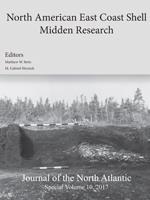Chesapeake Bay is home to highly productive marine ecosystems that were a key part of Native American subsistence for millennia. Despite a number of archaeological projects focused on Chesapeake Bay prehistory, key questions remain about the nature of human use of the estuary through time and across space. Recent work at 7 shell middens on the Rhode River Estuary, MD, provides insight into human subsistence and estuarine res ource exploitation from ∼3200 years ago through the mid-19th century. This is an important diachronic sequence of coastal land use and subsistence for the Chesapeake and helps fill a gap in our understanding of coastal adaptations along North America's Atlantic Coast. Despite climate change, fluctuating sea levels, and the likely appearance of maize agriculture in the area ∼1000 years ago, Native American exploitation of oysters and estuarine resources remained fairly consistent across the Early to Late Woodland. These data stand in contrast to the mid-1800s assemblage, which was likely deposited by 19th-century Euro-Americans and contains overall larger oysters perhaps obtained from deeper waters that may not have been a focus of Native American harvest. When placed in the context of other regional data, our analysis illustrates the value of shell middens for helping understand human subsistence strategies and the historical ecol ogy of the North American Atlantic Coast.
How to translate text using browser tools
1 April 2017
3000 Years of Human Subsistence and Estuarine Resource Exploitation on the Rhode River Estuary, Chesapeake Bay, Maryland
Torben C. Rick,
Leslie A. Reeder-Myers,
Michael J. Carr,
Anson H. Hines
ACCESS THE FULL ARTICLE

Journal of the North Atlantic
Vol. 10 • No. sp10
2017
Vol. 10 • No. sp10
2017




